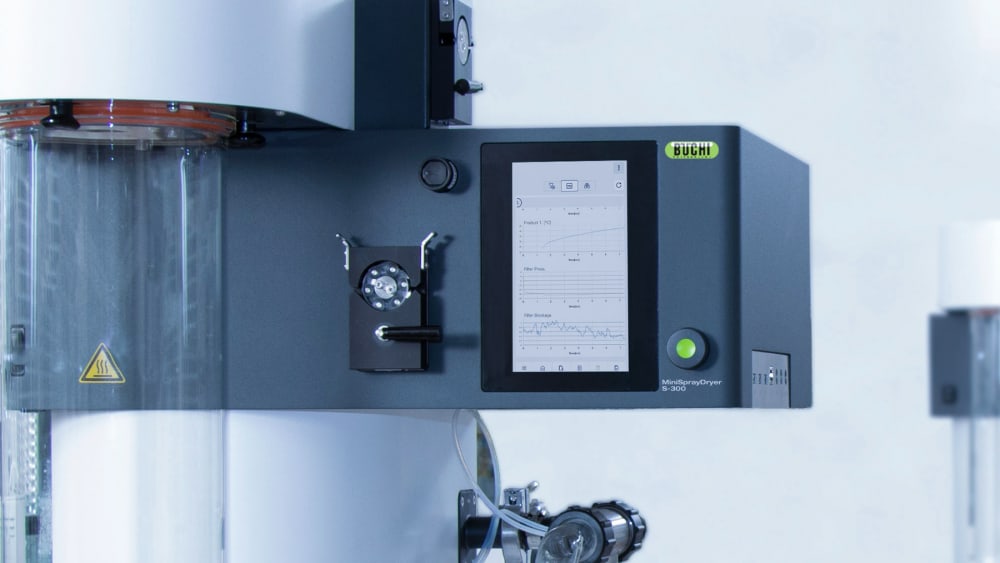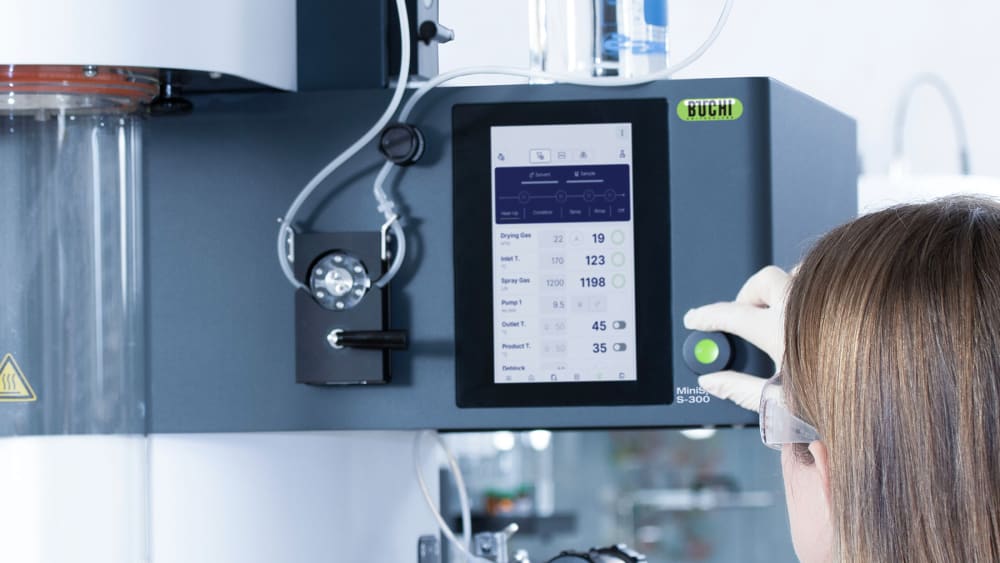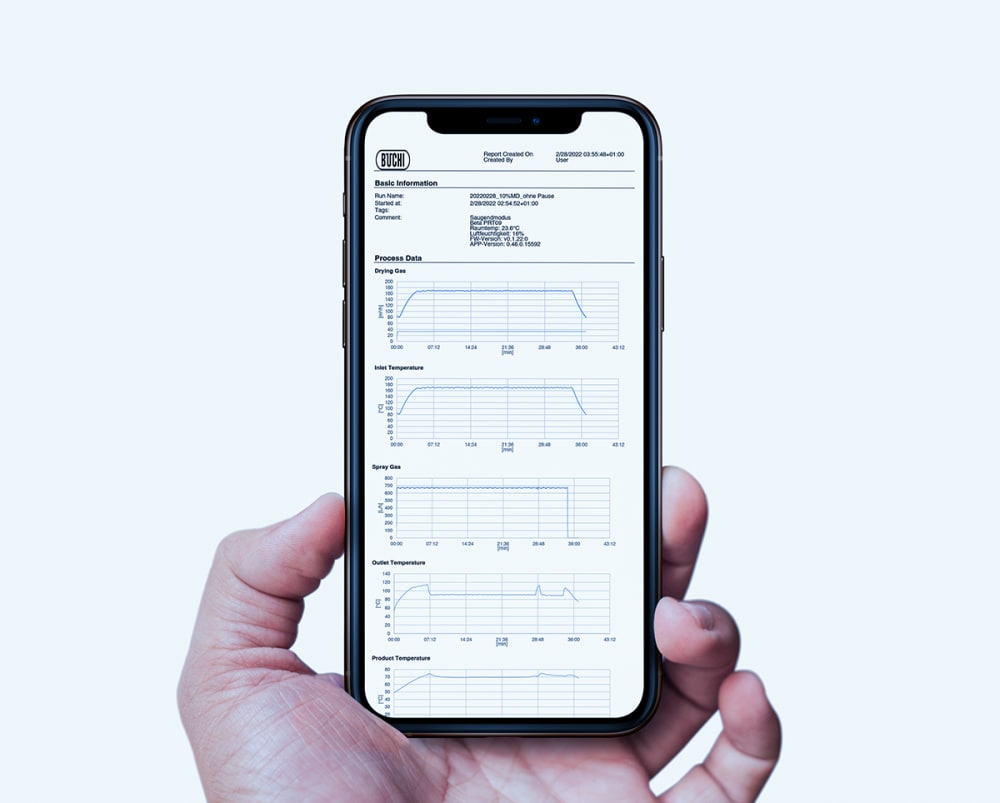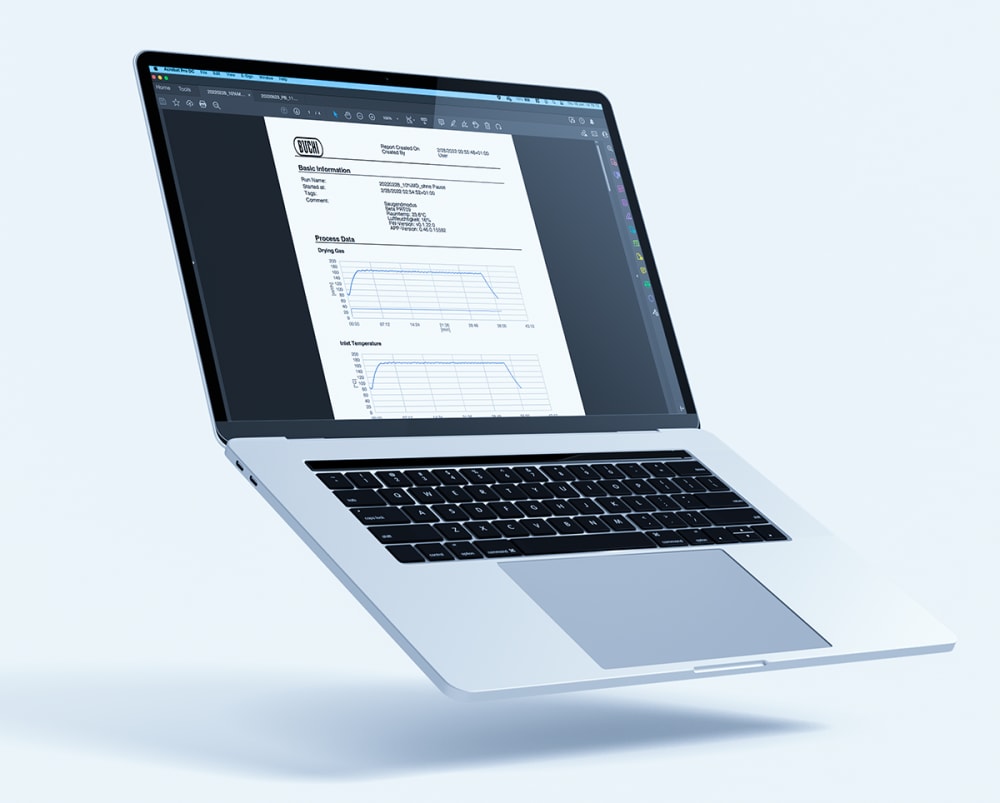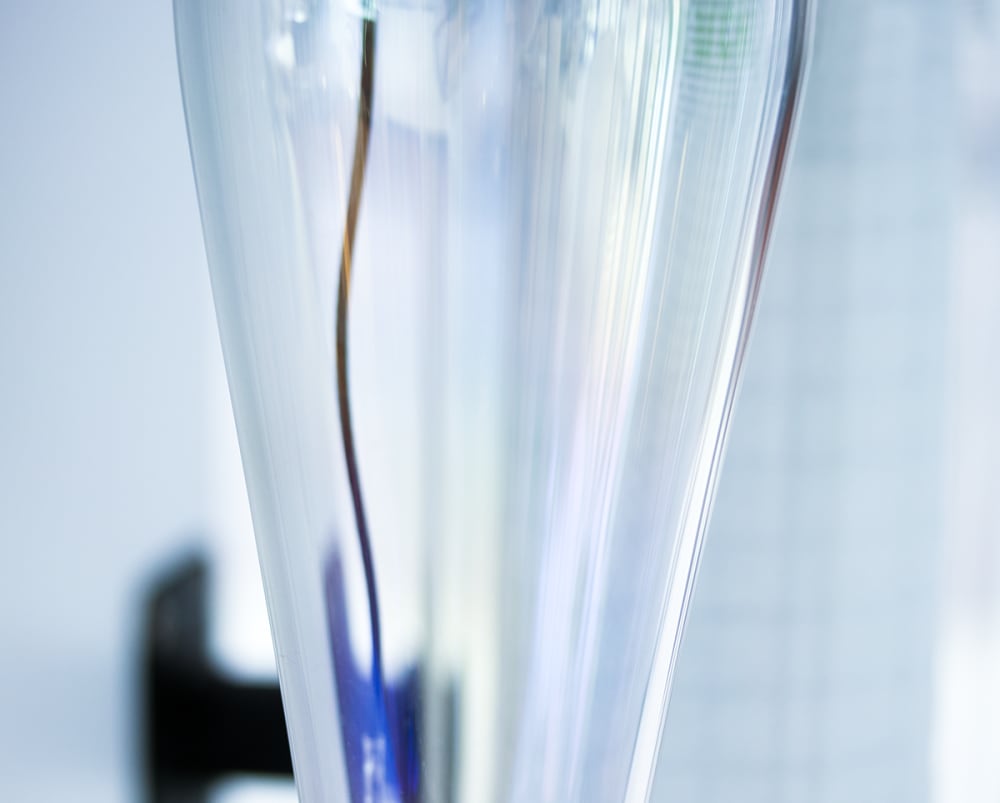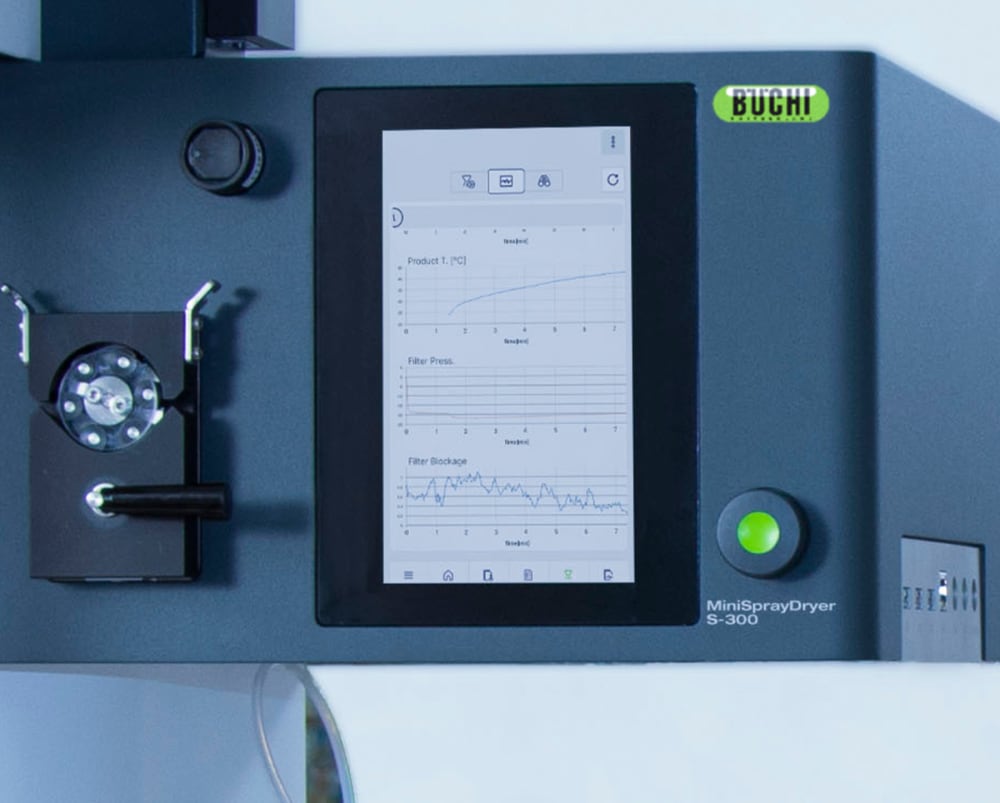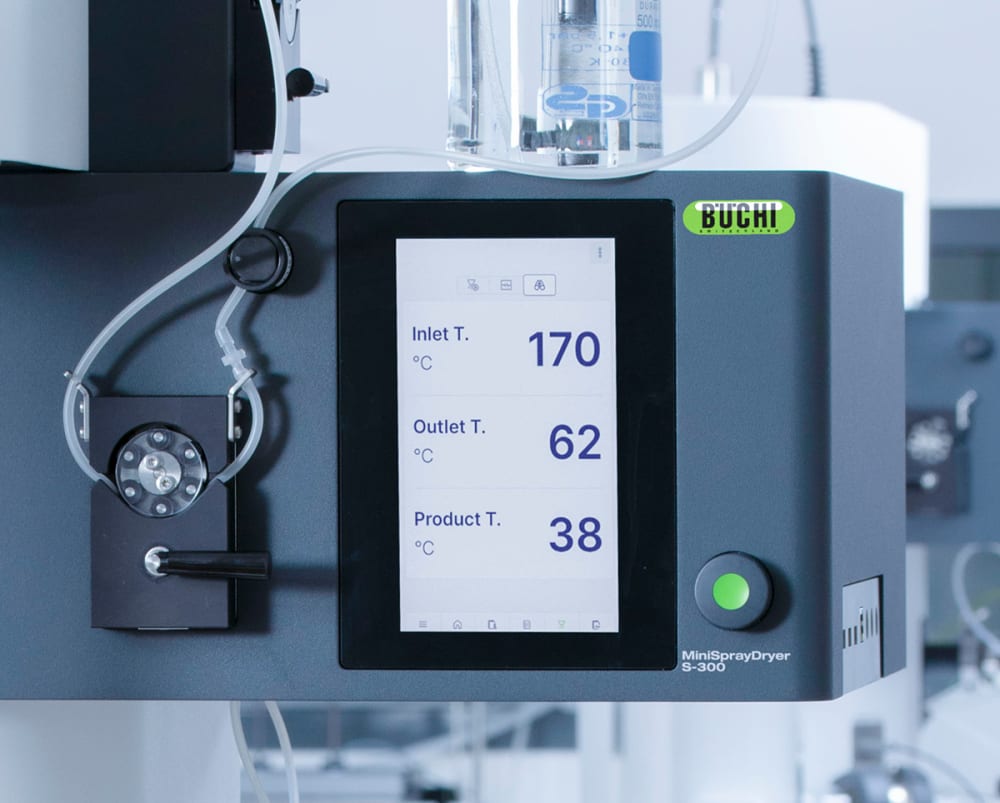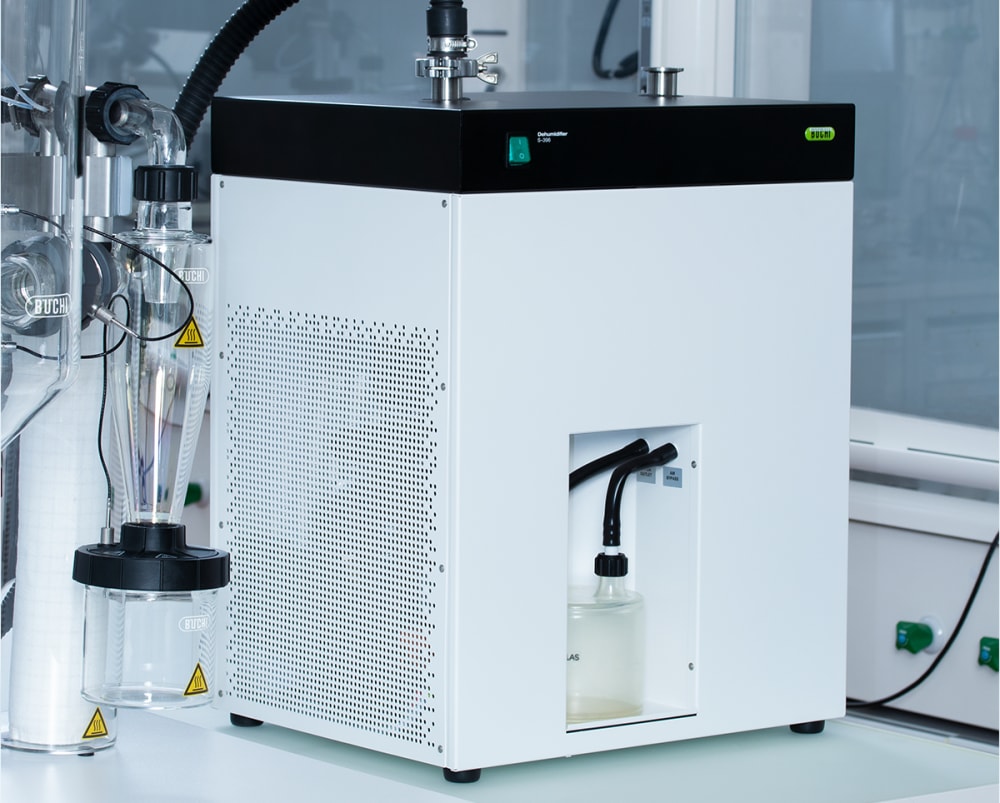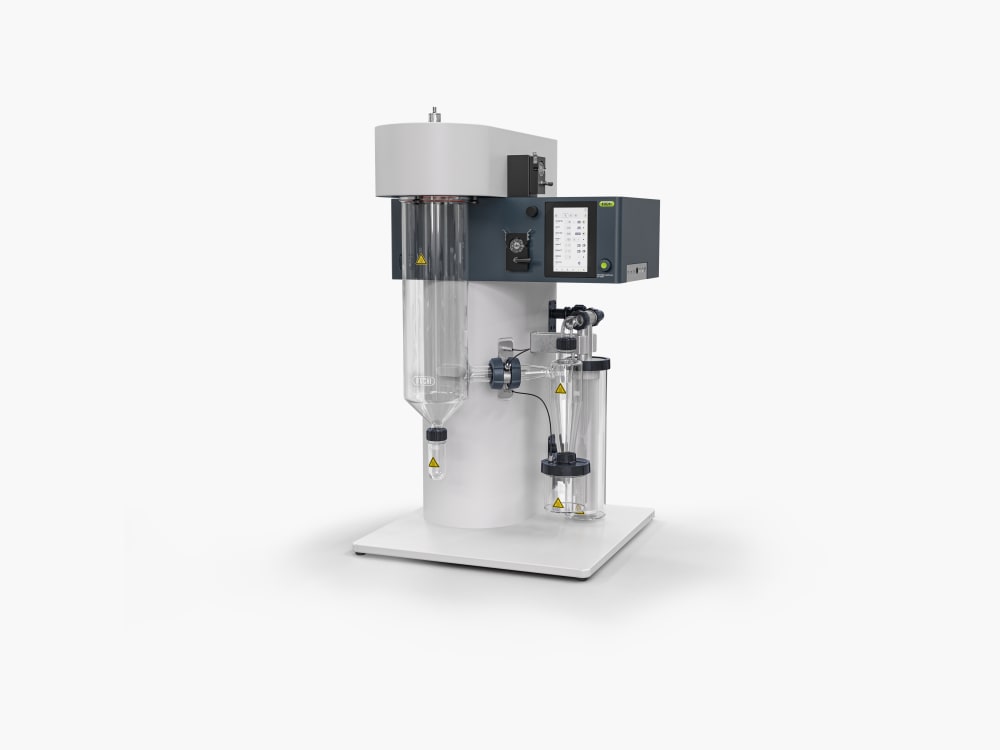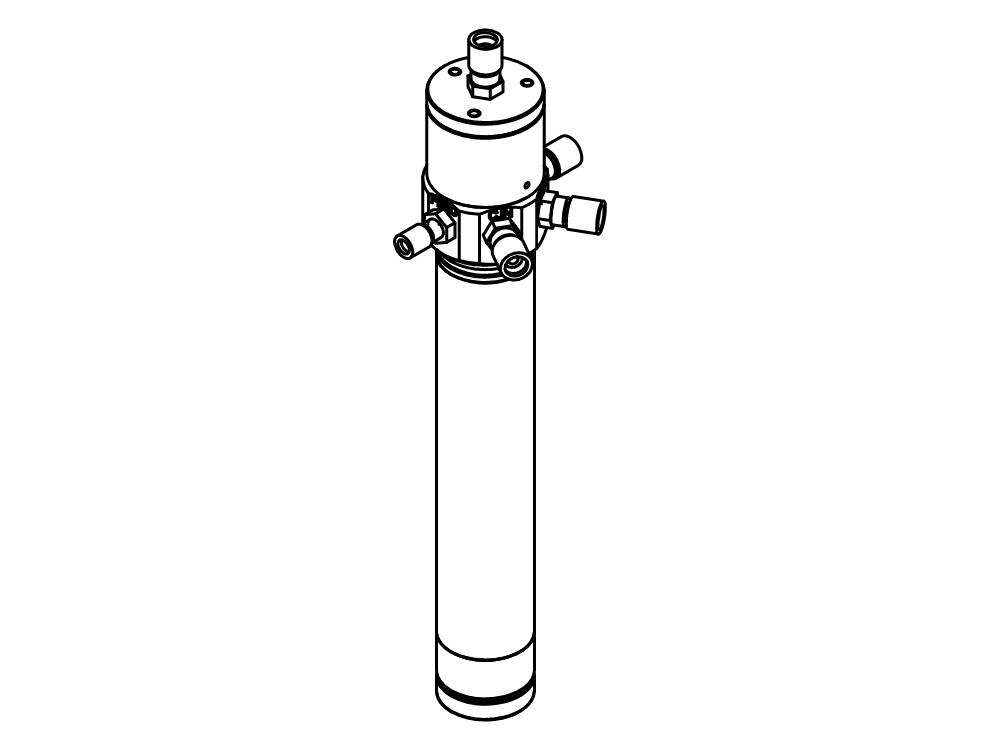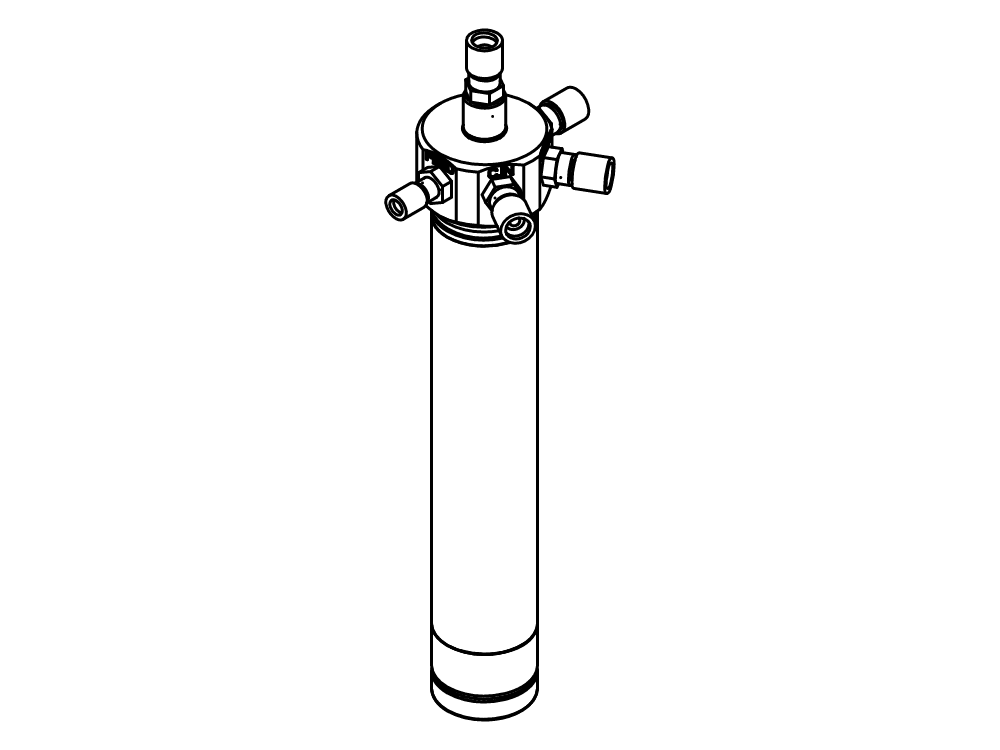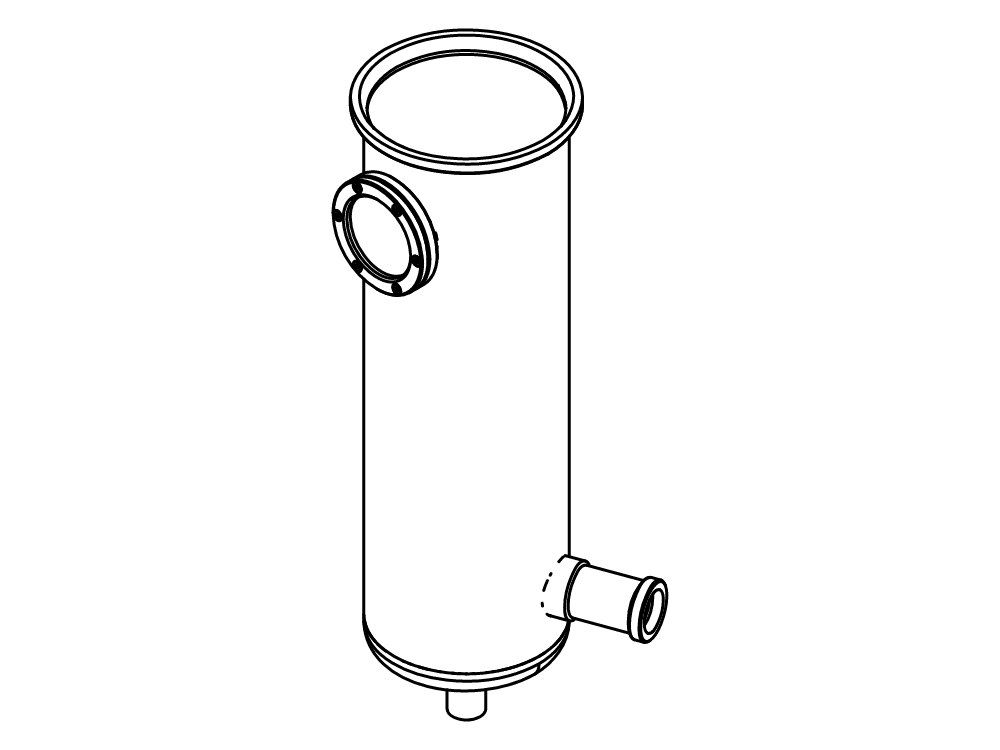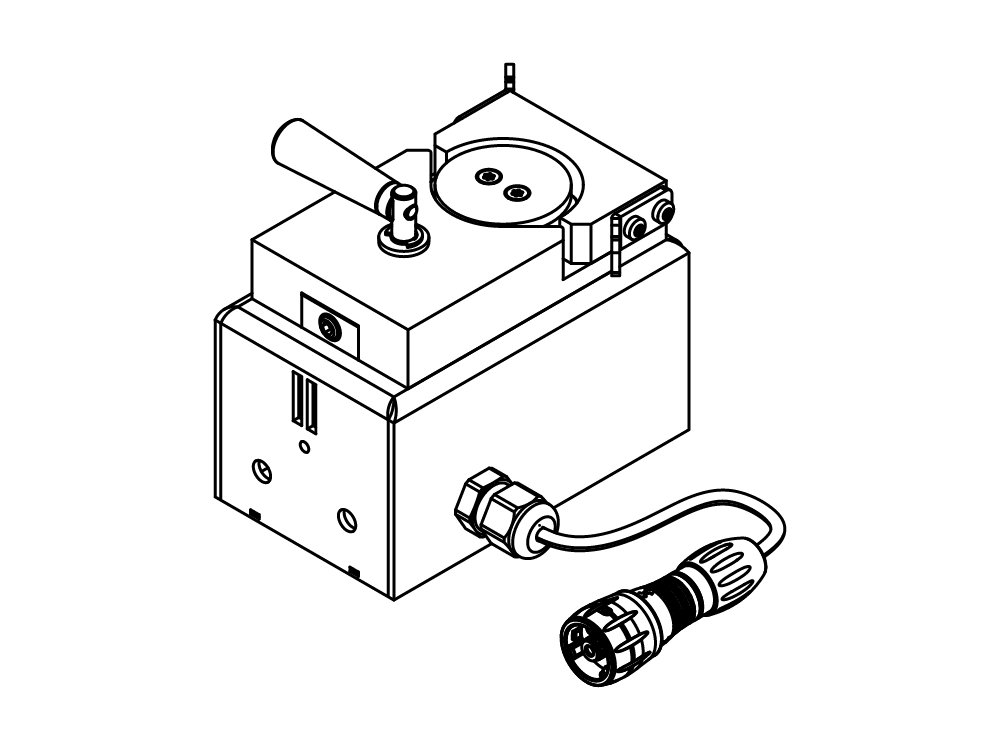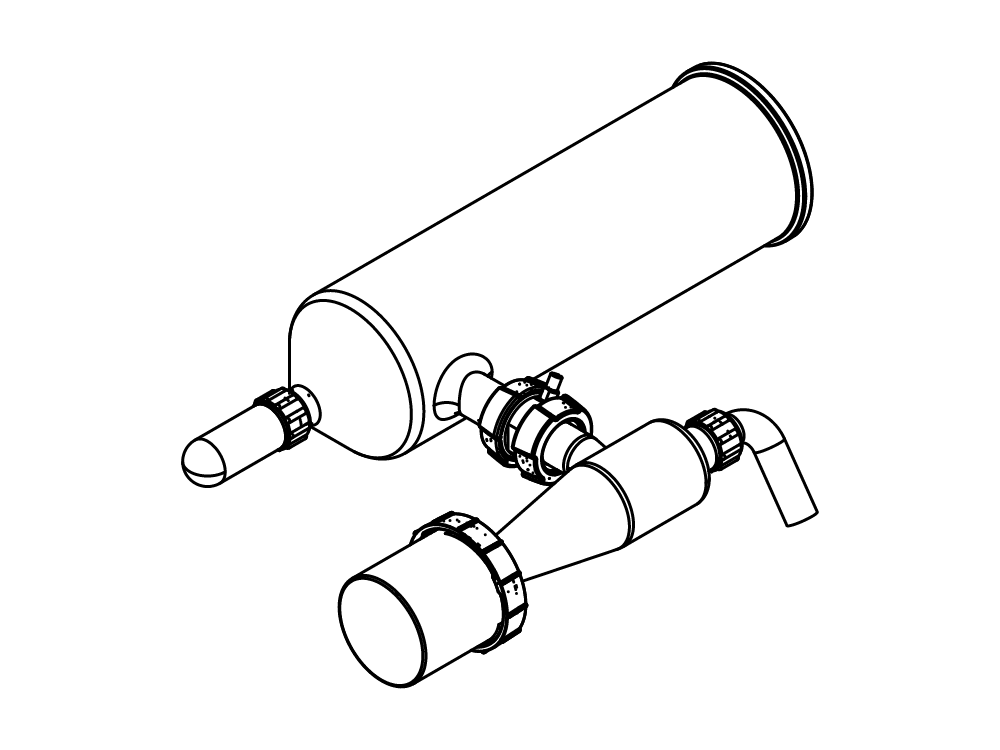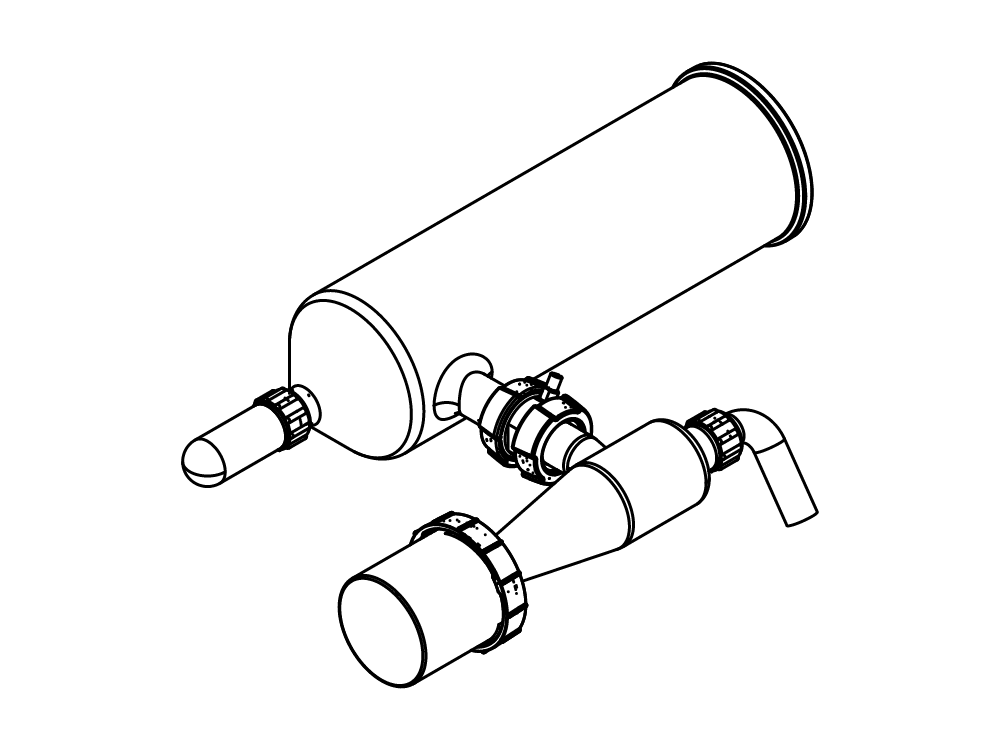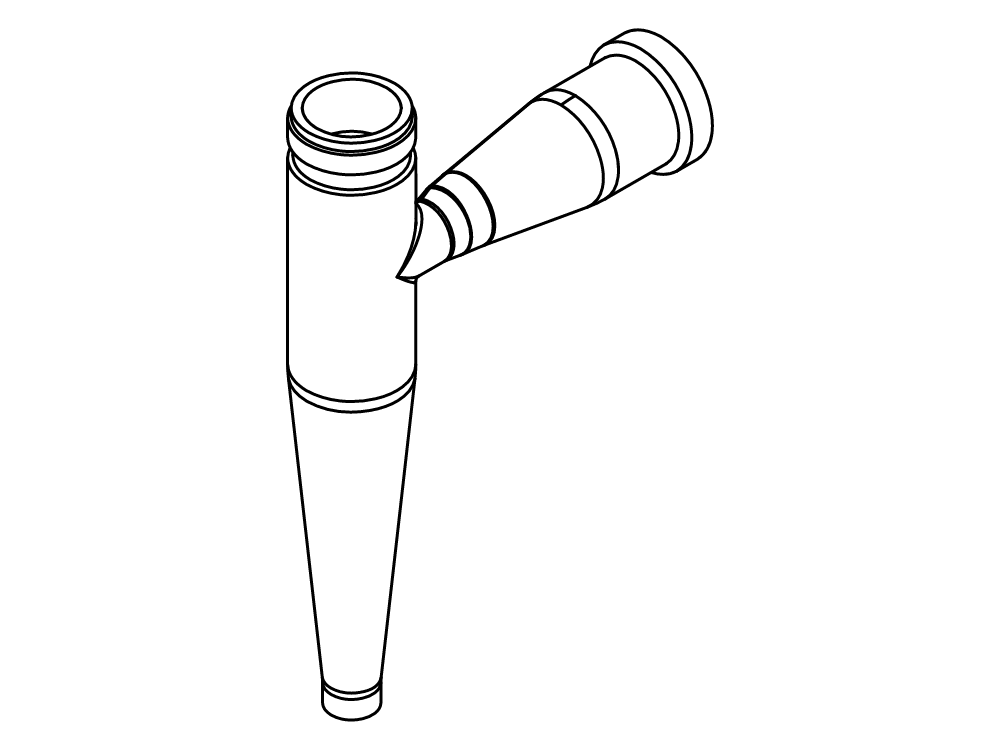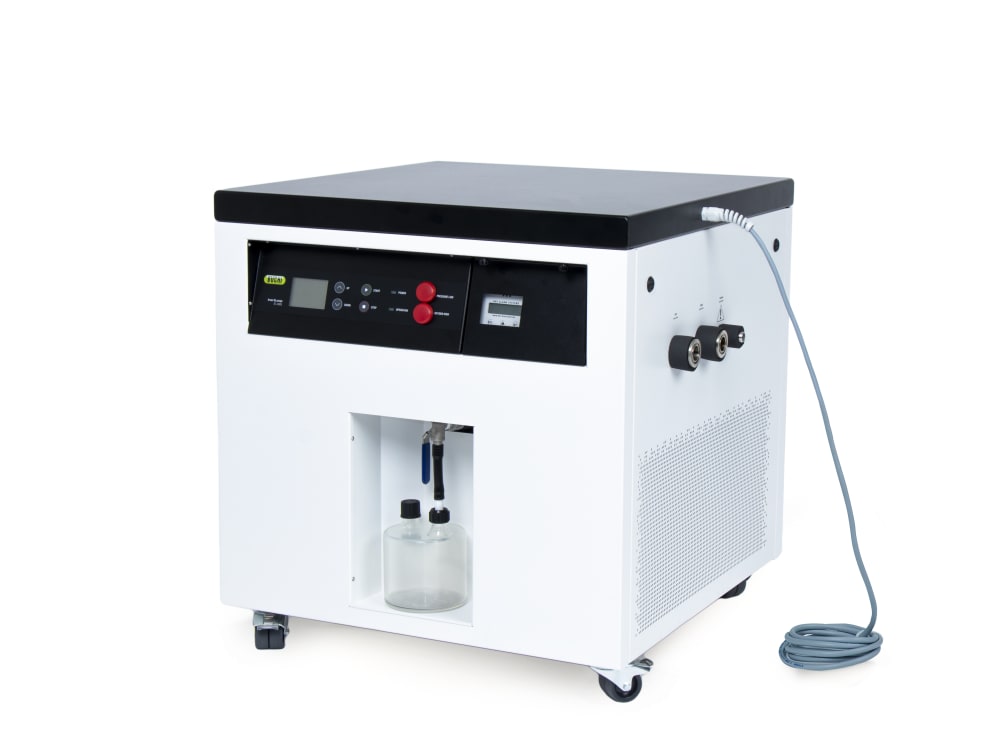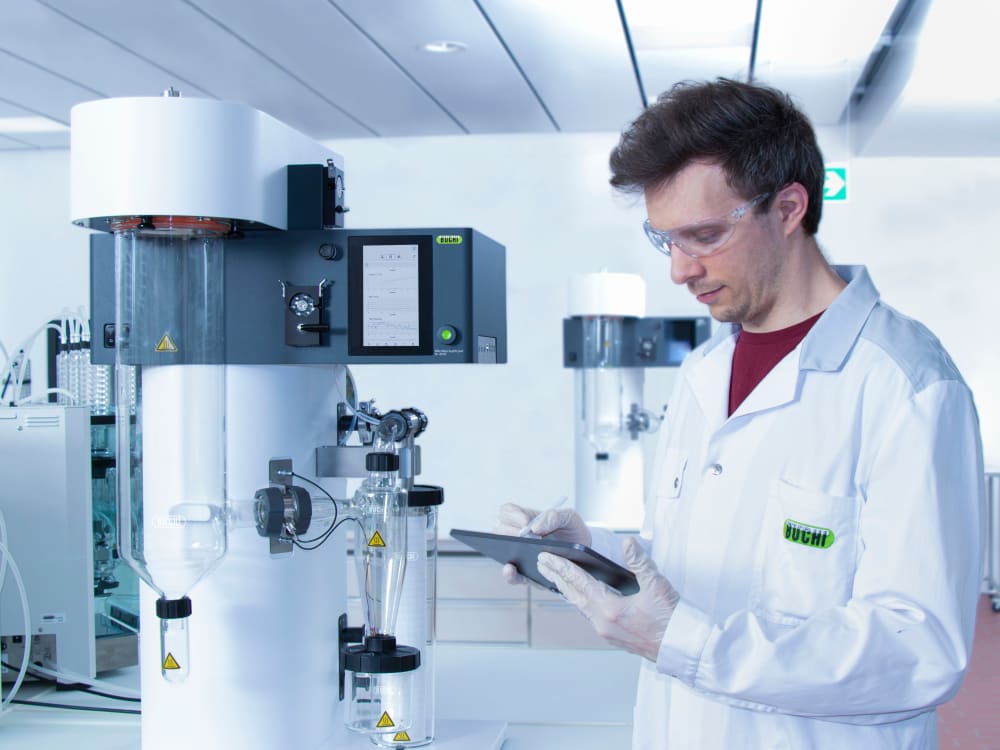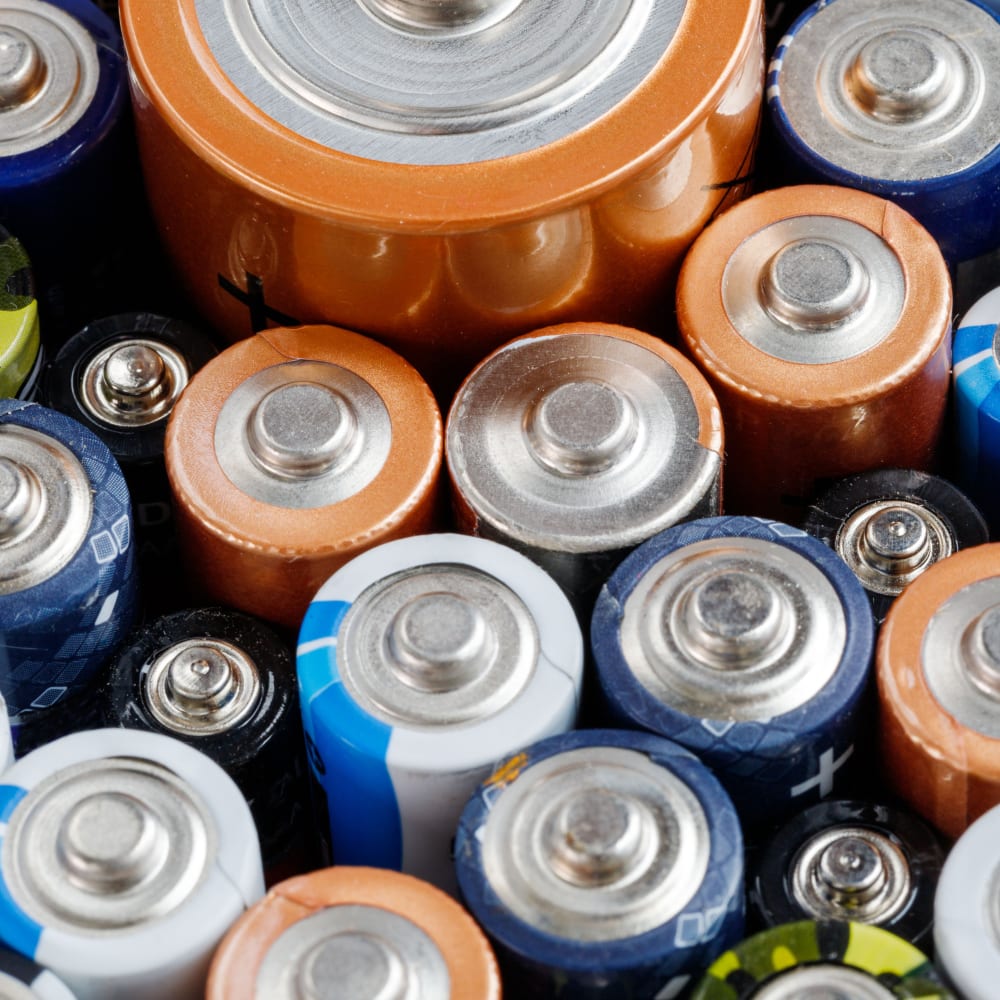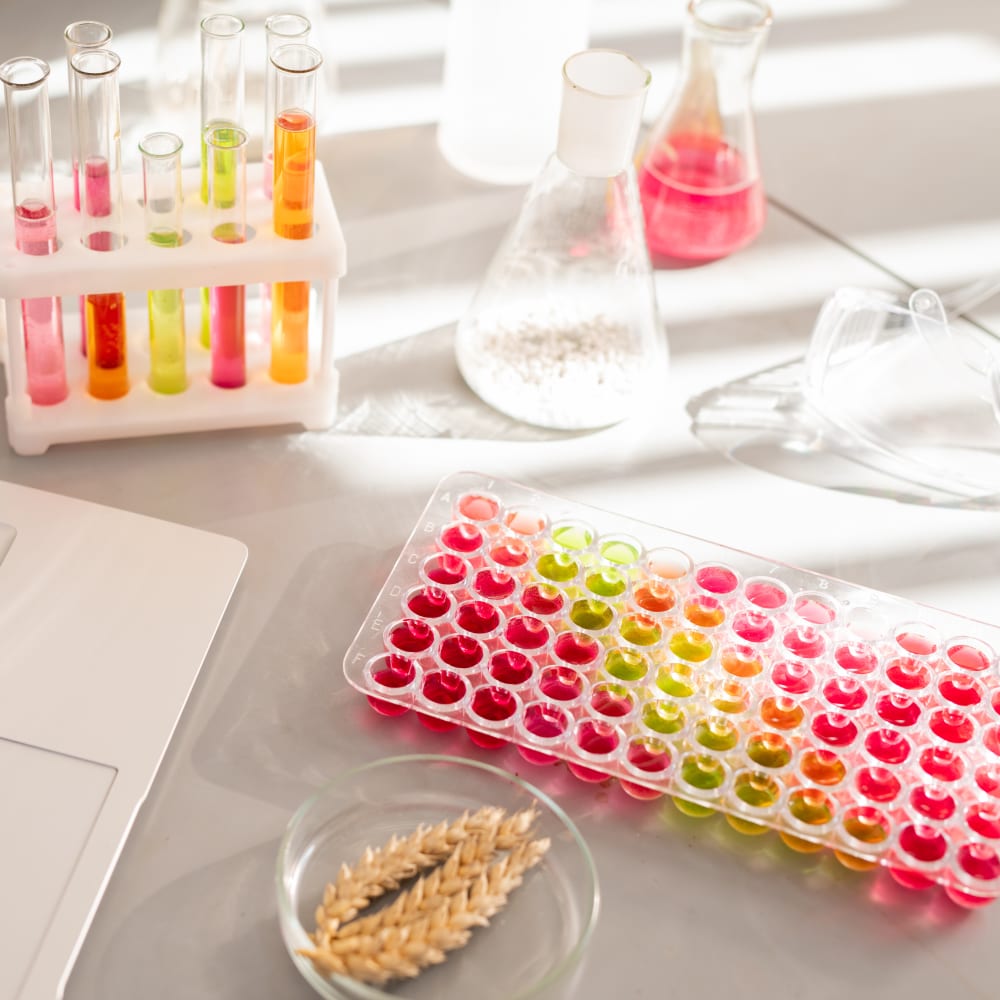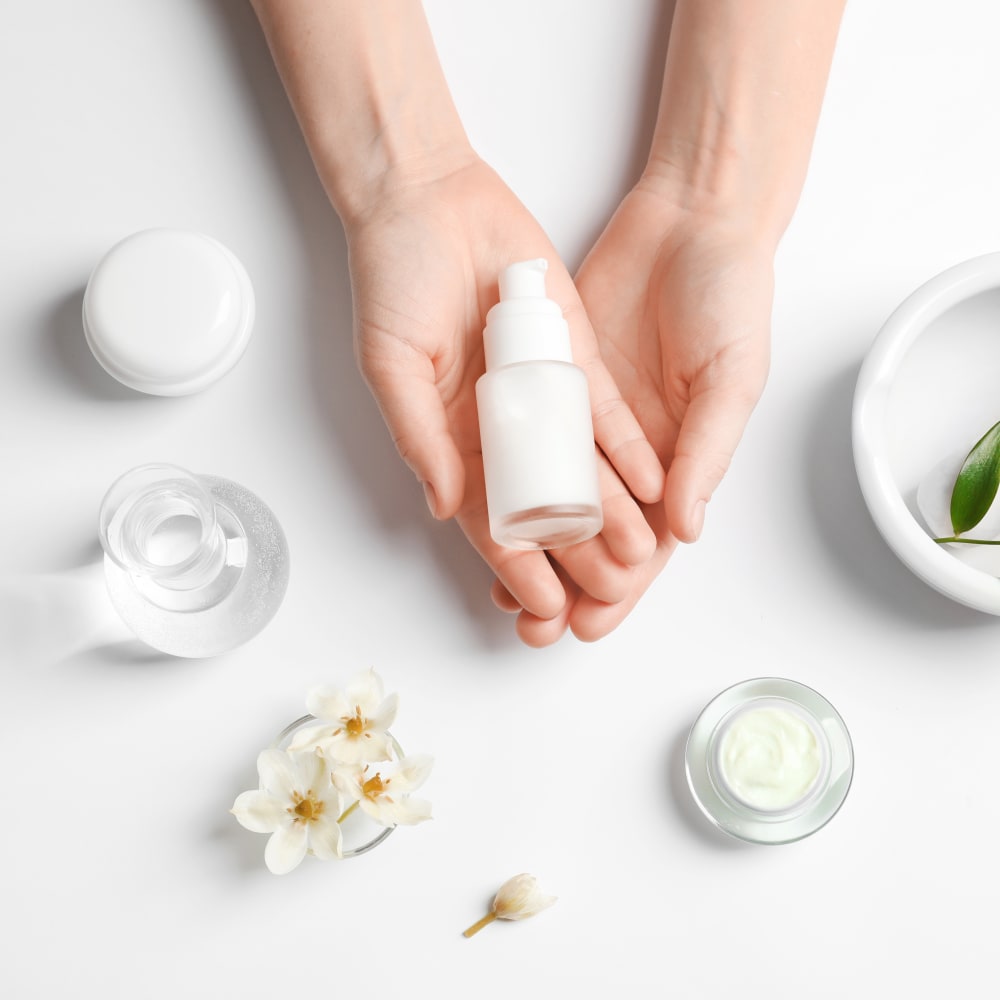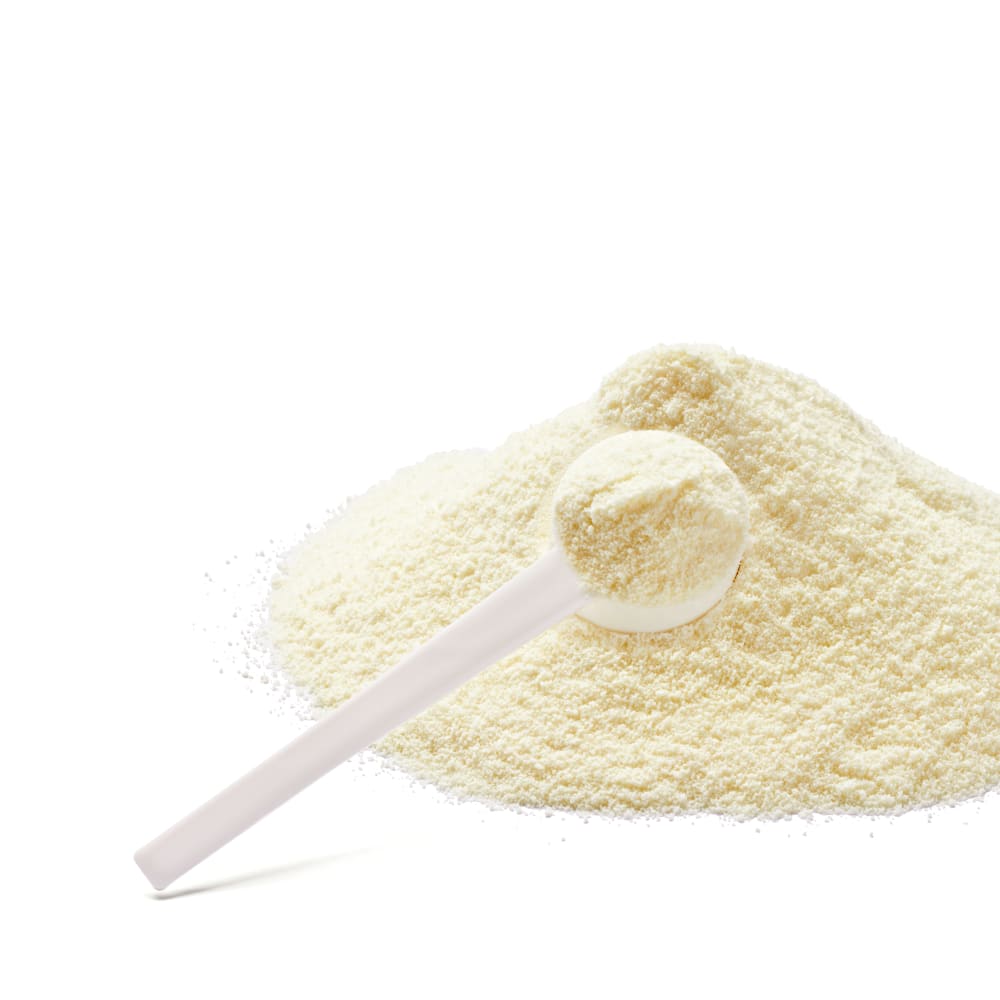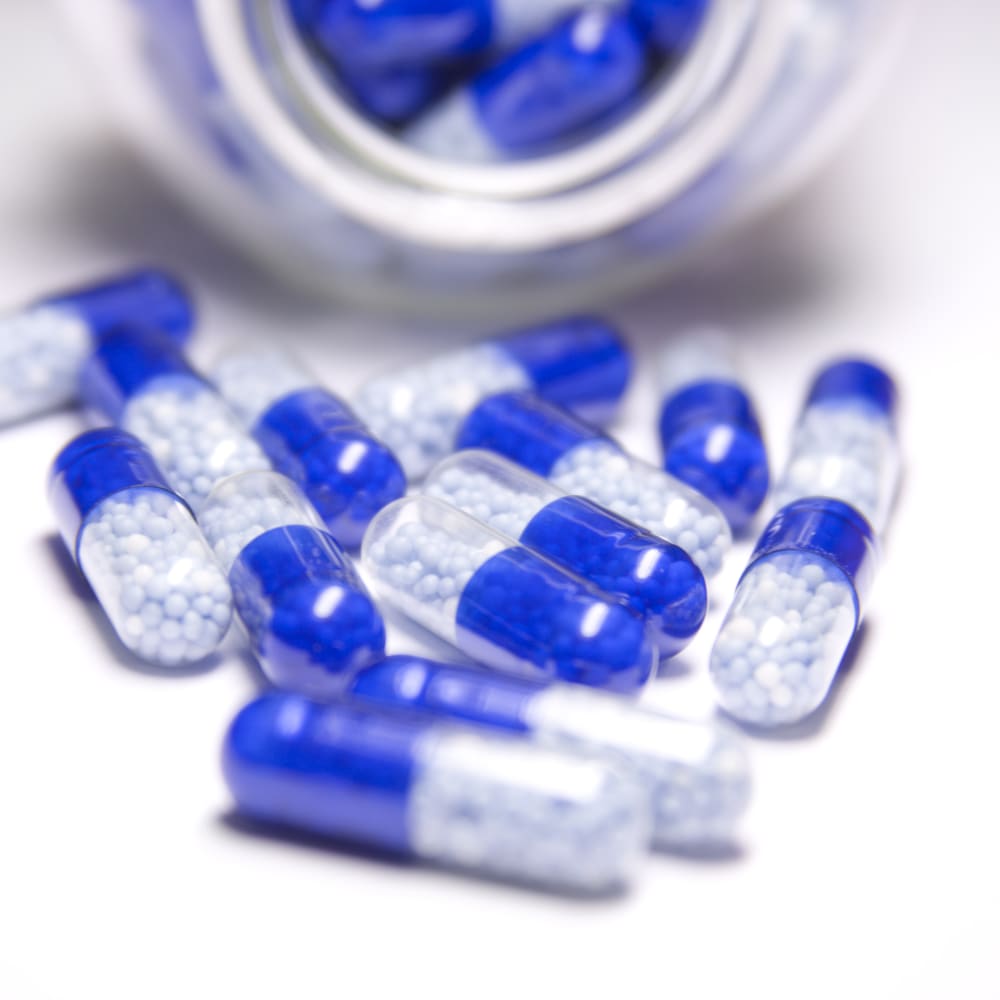Mini Spray Dryer S-300 (เครื่องทำแห้งแบบพ่นฝอยระดับห้องแล็บ)
เครื่องทำแห้งแบบพ่นฝอยระดับห้องแล็บรุ่นใหม่
ด้วย Mini Spray Dryer S-300 (เครื่องทำแห้งแบบพ่นฝอยระดับห้องแล็บ) ทำให้ BUCHI ได้ครองตำแหน่งผู้นำตลาดทั่วโลกมากว่า 40 ปี เครื่องทำแห้งแบบพ่นฝอยระดับห้องแล็บได้รวมเอาการออกแบบผลิตภัณฑ์เข้ากับความสามารถของอุปกรณ์เพื่อมอบประสบการณ์แก่ผู้ใช้ที่เหนือกว่า

จุดเด่น
- ควบคุมหรือติดตามดู Mini Spray Dryer S-300 (เครื่องทำแห้งแบบพ่นฝอยระดับห้องแล็บ) ได้ในทุกที่ ทุกเวลา แอปบนอุปกรณ์มือถือหรือคอมพิวเตอร์จะช่วยให้คุณเข้าใช้งานได้อย่างเต็มที่กับอินเทอร์เฟซผู้ใช้ทั้งหมดของเครื่องทำแห้งแบบพ่นฝอยระดับห้องแล็บ ด้วยตัวเลือกการควบคุมระยะไกล คุณจึงสามารถจัดการเวลาได้อย่างยืดหยุ่นและตอบสนองได้รวดเร็วต่อการเปลี่ยนแปลงขั้นตอนการทำงาน
- ด้วยประสบการณ์กว่า 40 ปีในการทำแห้งแบบพ่นฝอยระดับห้องแล็บ ทำให้ BUCHI ได้สั่งสมความรู้เฉพาะทางในการประยุกต์ใช้งานที่กว้างขวาง ค้นหาหนึ่งในผลงานตีพิมพ์นับพันฉบับเกี่ยวกับเครื่องทำแห้งแบบพ่นฝอยของ BUCHI ในห้องสมุดทางวิทยาศาสตร์ หรือค้นดูในฐานข้อมูลการใช้งานเครื่องทำแห้งแบบพ่นฝอยทางออนไลน์ของเราเพื่อหาวิธีการใช้งานที่ตรงตามความต้องการของคุณ ด้วย Mini Spray Dryer S-300 (เครื่องทำแห้งแบบพ่นฝอยระดับห้องแล็บ) คุณสามารถทำซ้ำผลลัพธ์ที่เคยทำได้ด้วยเครื่องทำแห้งแบบพ่นฝอยระดับห้องแล็บของ BUCHI รุ่นก่อนหน้า คุณจะไม่สูญเสียงานอันมีค่าของคุณในการใช้เครื่องมือชิ้นใหม่ที่สามารถส่งต่อข้อมูลได้อย่างรวดเร็วและราบรื่น
- โหมดการทำงานแบบอัตโนมัติช่วยให้คุณตั้งโปรแกรมให้กับ Mini Spray Dryer S-300 Advanced (เครื่องทำแห้งแบบพ่นฝอยระดับห้องแล็บ รุ่นแอดวานซ์) ของคุณได้ล่วงหน้าและรันตามวิธีของคุณได้โดยอัตโนมัติ เครื่องทำแห้งแบบพ่นฝอยระดับห้องแล็บจะทำความร้อน ปรับสภาพอุณหภูมิขาออก พ่นละอองฝอยสารละลายบริสุทธิ์ พ่นละอองฝอยตัวอย่างของคุณ พ่นละอองฝอยสารละลายบริสุทธิ์อีกครั้ง แล้วปิดตัวลงหลังจากดำเนินการกับตัวอย่างแล้ว โหมดอัตโนมัติช่วยลดระยะเวลาให้กับการทำงานของคุณ โดยเฉพาะอย่างยิ่งในระหว่างงานที่ต้องทำซ้ำๆ
- ลดการสูญเสียตัวอย่างในระหว่างการทำแห้งแบบพ่นฝอยระดับห้องแล็บได้ด้วยไซโคลนที่เคลือบสารตัวนำทำให้ลดโอกาสที่ตัวอย่างของคุณจะติดอยู่ที่ผนังอุปกรณ์ได้
- ประหยัดเวลาและลดความยุ่งยากได้ด้วยการบันทึกการทำงานของคุณและทำซ้ำได้ในภายหลัง คุณยังสามารถตั้งโปรแกรมคิวตัวอย่างเพื่อรันตัวอย่างหนึ่งหลังจากอีกตัวอย่างหนึ่งได้กับ Mini Spray Dryer S-300 (เครื่องทำแห้งแบบพ่นฝอยระดับห้องแล็บ) เพื่อเพิ่มความสะดวกยิ่งขึ้น
- การรันทำงานทั้งหมดที่ทำไว้บน Mini Spray Dryer S-300 (เครื่องทำแห้งแบบพ่นฝอยระดับห้องแล็บ) จะมีจดข้อมูลและบันทึกไว้บนตัวอุปกรณ์ เพียงแค่กดปุ่ม คุณก็สามารถสร้างรายงาน PDF หรือไฟล์ .csv จากข้อมูลกระบวนการของคุณได้อย่างง่ายดาย
- Mini Spray Dryer S-300 (เครื่องทำแห้งแบบพ่นฝอยระดับห้องแล็บ) ให้คุณได้ติดตามดูทั้งอุณหภูมิขาออกและอุณหภูมิผลิตภัณฑ์สุดท้าย เพื่อให้ข้อมูลเพิ่มเติมเกี่ยวกับอิทธิพลด้านอุณหภูมิต่อตัวอย่างของคุณ ข้อมูลนี้อาจช่วยให้คุณปกป้องตัวอย่างได้ดียิ่งขึ้น โดยเฉพาะอย่างยิ่งเมื่อพ่นความร้อนทำแห้งต่อตัวอย่างที่มีความละเอียดอ่อน
- พารามิเตอร์ทั้งหมดใน Mini Spray Dryer S-300 (เครื่องทำแห้งแบบพ่นฝอยระดับห้องแล็บ) เช่น การพ่นละอองแก๊ส, แก๊สไล่ความชื้น และความเร็วของปั๊มฝีด จะมีอยู่ในค่า SI และควบคุมด้วยตัวระบบแบบอัตโนมัติ ฟีเจอร์เหล่านี้ช่วยเพิ่มความสามารถในการทำซ้ำกระบวนการของคุณได้ถึงขีดสุด
- Mini Spray Dryer S-300 (เครื่องทำแห้งแบบพ่นฝอยระดับห้องแล็บ) ช่วยให้ดำเนินการได้อย่างปลอดภัยต่อตัวอย่างกับสารทำละลายออร์แกนิกเมื่อใช้ร่วมกับ Inert Loop S-395 (อุปกรณ์เสริมเพื่อทดสอบในระบบปิดร่วมกับสารเคมี) แก๊สไนโตรเจนไล่ความชื้นจะเป็นแบบหมุนเวียนซ้ำและสารทำละลายจะถูกเก็บเป็นแบบสารควบแน่น ระดับออกซิเจนและการไหลของแก๊สในระบบจะมีการติดตามตรวจสอบอย่างต่อเนื่องเพื่อความปลอดภัยของคุณ
Compare the Mini Spray Dryer S-300 (เครื่องทำแห้งแบบพ่นฝอยระดับห้องแล็บ)
อะไหล่และอุปกรณ์ที่เกี่ยวข้อง
ดาวน์โหลด
- Technical Data Sheet Mini Spray Dryer S-300(pdf)
- Product Brochure Mini Spray Dryer S-300 en(pdf)
- Product Brochure Pharma and Chemistry en(pdf)
- Operation Manual Mini Spray Dryer S-300 en(pdf)
- Installation Manual Mini Spray Dryer S-300 in closed mode with Inert Loop(pdf)
- Installation Manual Mini Spray Dryer S-300 in closed mode with Dehumidifier and Inert Loop(pdf)
- Installation Manual Mini Spray Dryer S-300 in open suction mode(pdf)
- Installation Manual Mini Spray Dryer S-300 in open pressure mode(pdf)
- Configuration guide S-300(pdf)
- Pre-Installation Checklist Mini Spray Dryer S-300(pdf)
เครื่องมือที่เกี่ยวข้อง
หลักสูตรและการฝึกอบรมที่เกี่ยวข้อง
การนำมาประยุกต์ใช้งาน
ความยืดหยุ่นสำหรับการใช้งานอย่างเต็มรูปแบบ
Batteries
Laboratory-scale spray drying is a valuable technique in battery research for the fabrication of electrode materials. It enables precise control over particle size and morphology, resulting in electrodes with optimized electrochemical performance. Spray drying allows for the production of fine and uniform particles, contributing to the development of high-performance batteries. This method facilitates the development of electrode materials with enhanced properties, such as improved conductivity and electrochemical stability. By employing laboratory-scale spray drying in battery research, scientists can advance energy storage technologies and develop more efficient and reliable batteries for various applications.
Biotech
Applications: Cells, bacteria and protein encapsulation, cell transplantation, biotransformation Methods: Drying, encapsulation of liquids, Encapsulation of solids, Micronization, Cell encapsulation Instruments used: Mini Spray Dryer S-300, Nano Spray Dryer B-90, Encapsulator B-390 / B-395, Lyovapor L-200 / L-300
Chemicals / Materials
Laboratory-scale spray drying is a versatile and efficient method for producing a wide range of materials in the chemicals and materials science field. In recent years, notable trends have emerged, including the application of spray drying for nano materials, paints and coatings, and catalysts. One trend is the use of laboratory-scale spray drying in the synthesis of nano materials. This technique enables the production of nanoparticles and nanostructured materials with controlled size, morphology, and composition. By tailoring these properties, researchers can develop advanced materials with improved mechanical strength, enhanced conductivity, and tailored surface functionalities. Spray drying also finds application in the production of paints and coatings. By producing fine and uniform particles, spray drying contributes to the desired properties of coatings, such as improved color, durability, and film formation. This trend leads to the development of high-quality coatings with enhanced performance and functionality. Furthermore, laboratory-scale spray drying plays a role in the development of catalysts. By controlling particle size, composition, and surface area, spray drying allows for the design and optimization of catalysts for efficient chemical transformations and environmental applications. In summary, laboratory-scale spray drying in the chemicals and materials science field is witnessing trends in nano materials, paints and coatings, and catalysts. These trends contribute to the development of advanced materials, high-performance coatings, and efficient catalysts, driving innovation in various industries.
Cosmetics
Applications: Cosmetics, fragrances Methods: Drying, encapsulation of liquids, Encapsulation of solids, Micronization Instruments used: Mini Spray Dryer S-300, Encapsulator B-390 / B-395, Lyovapor L-200 / L-300
Food
Applications: Encapsulation of additives, controlled release, nutraceuticals, functional foods, flavors, vitamins, proteins, probiotic bacteria, juice concentrate, milk powder Methods: Drying, encapsulation of liquids, Encapsulation of solids, Micronization Instruments used: Mini Spray Dryer S-300, Encapsulator B-390 / B-395, Lyovapor L-200 / L-300
Pharma
Laboratory-scale spray drying is a vital process in the pharmaceutical industry, used for the formulation and development of various drugs and medications. It involves converting liquid solutions or suspensions into dry powders through atomization and rapid evaporation. This technique offers several benefits, including improved stability, enhanced bioavailability, and ease of handling. In recent years, several notable trends have emerged in laboratory-scale spray drying within the pharmaceutical sector. One significant trend is the use of spray drying for the production of solid dispersions. Solid dispersions are formulations where the drug is dispersed in a solid matrix, enhancing its solubility and dissolution rate. Spray drying enables the preparation of solid dispersion powders with uniform drug distribution, leading to improved drug delivery and efficacy. Another trend is the development of inhalable drugs using spray drying. This technique allows for the production of dry powder formulations suitable for inhalation, facilitating targeted delivery to the respiratory system. Inhalable drugs offer advantages in the treatment of respiratory diseases, such as asthma and chronic obstructive pulmonary disease (COPD). Taste masking is another important application of laboratory-scale spray drying. By encapsulating drugs with unpleasant taste profiles in taste-masking particles, the palatability of oral formulations can be improved. Spray drying enables the encapsulation of drugs within taste-masking coatings, leading to better patient compliance, particularly for pediatric and geriatric populations. Furthermore, laboratory-scale spray drying is increasingly employed for the development of controlled-release formulations. By incorporating drugs into sustained-release matrices or encapsulating them within microspheres or nanoparticles, spray drying allows for the controlled release of drugs over an extended period. This enables optimized drug dosage regimens and improved patient convenience. In conclusion, laboratory-scale spray drying in the pharmaceutical area is witnessing several significant trends, including the production of solid dispersions, inhalable drugs, taste-masking formulations, and controlled-release systems. These trends contribute to the development of novel drug formulations with enhanced solubility, targeted delivery, improved patient compliance, and optimized drug release profiles.
